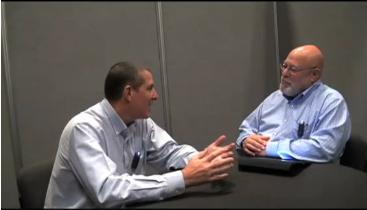At VMworld 2010, I had the great pleasure to record a video interview with Roger Green, Executive Editor at CIOZone.com. We chatted for about 20 minutes in total (in 2 parts) about virtualization, the issues of virtual stall (including both causes and solutions), how the antecedents of virtualization can inform our modern approaches, the importance of data center automation, the impending tsunami of cloud computing, and much more.
If you have not seen it, you can find Part 1 here, and Part 2 here.
(btw, if you have not seen the video archive on CIOZone.com, you really should – it includes some fantastic interviews with many virtualization and cloud experts and thought leaders including Microsoft Director David Greschler, Rackspace CTO John Engates, VMware GM Jim Morrisroe, VMware CIO Mark Egan, and my colleague and counterpart in our Virtualization Product Management team, CA Technologies VP Subo Guha – plus a host of other CIOs and IT experts. Definitely worth your time!)
I found a comment on the CIOZone.com discussion thread about the interview very interesting. It came from CIOZone member, Pete Simmeron (petesim), who posted:
Andi Mann, thanks for the great conversation, I learned a fair amount about some of the obstacles to implementing a virtualization solution. You mention issues like license control, deprovisioning excess virtualized servers, compliance, and how IT support staff do not necessarily scale to help bring an organization to the Utopian 100% virtualized environment. Well my question is then how do we move past these obstacles? Do we start slow and develop the necessary skills in house or do we hire from outside, and thinking ahead do you think this will become a highly sought after job skill in the next 10 years??
What a great question! It inspired me to a longer response than might be appropriate in a comment box, but here it is in full:
Pete, thanks for the comment.
Moving past the obstacles is certainly the goal, and it is not easy, but it is possible. I think automation tools are massively important, but people and process are key too.
For example, to manage licences properly, and to track which VMs are being used and which can be reclaimed, some type of asset and inventory registry is an excellent tool. However, to really make this valuable, instead of just adding work manually recording VM allocations and movements, it really has to be updated automatically when VMs are provisioned and deprovisioned. This will save resources (admins don’t have to manually assign and collect VMs and licenses), save costs (licences can be more easily reused instead of adding new license costs), and help expand virtualization deployment and maturity (admins can move onto virtualizing more complex systems, rather than just babysitting existing VMs).
However, it is also important to address the people & process issues, not just the technology issues. For example, you have to make sure that IT admins and even VM owners don’t deliberately find ‘workarounds’ for the asset registry that might make their job a little easier, and maybe even save their department some money, but which actually end up costing the wider company a lot more in terms of compliance breaches and increased license costs. It is also critical to make sure there is a clear, known, and easily accessed process in place (ideally one which is automatically enforced) to work with VM owners/requestors to identify and deprovision VMs that are no longer in use. This will make sure the technology benefits accrue as expected, but also will simplify some complex and problematic VM management activities.
As to where you start, a lot depends on existing process and technology maturity, organization size, the most pressing problems, and the overall goals. Most orgs will do best to solve one problem at a time with the people they have – perhaps managing VM performance, or controlling licenses, or automating provisioning. But very mature orgs will likely be able to do more up front, like implementing a service catalog and service desk approach to automated provisioning and deprovisioning, or even combining this with resource pools and self-service to start on the journey to cloud computing. Meanwhile, smaller orgs will probably need to bring in experts at least temporarily to help them get over the hump, as they are typically harder-pressed to skill up and resource in-house for such significant IT changes.
Finally, yes, I absolutely believe this will be an in-demand skill for years to come. The evidence is already there, in the higher average pay rates for administrators with virtualization certifications, and I think this will continue. Administrators and managers that can effectively harness tools, processes, and people to overcome virtual stall will end up driving advances in virtualization – not just increasing the number of VMs deployed, but improving their virtualization maturity. This in turn will drive not just the incremental (albeit short-lived) CapEx savings from server consolidation, but also to fundamental and long-term gains in OpEx reduction, business agility, service availability, continuity, and more that comes when virtualization (and cloud) transforms from a tactical IT project to a strategic business enabler.
Of course, I have an opinion (anyone who knows me will not be at all surprised by that!), but I am also very interested in what other people think is going to be the key to Pete’s questions. Please do go ahead and check out the video on CIOZone.com, and please add to the discussion either there or here. Or, like me, both!
